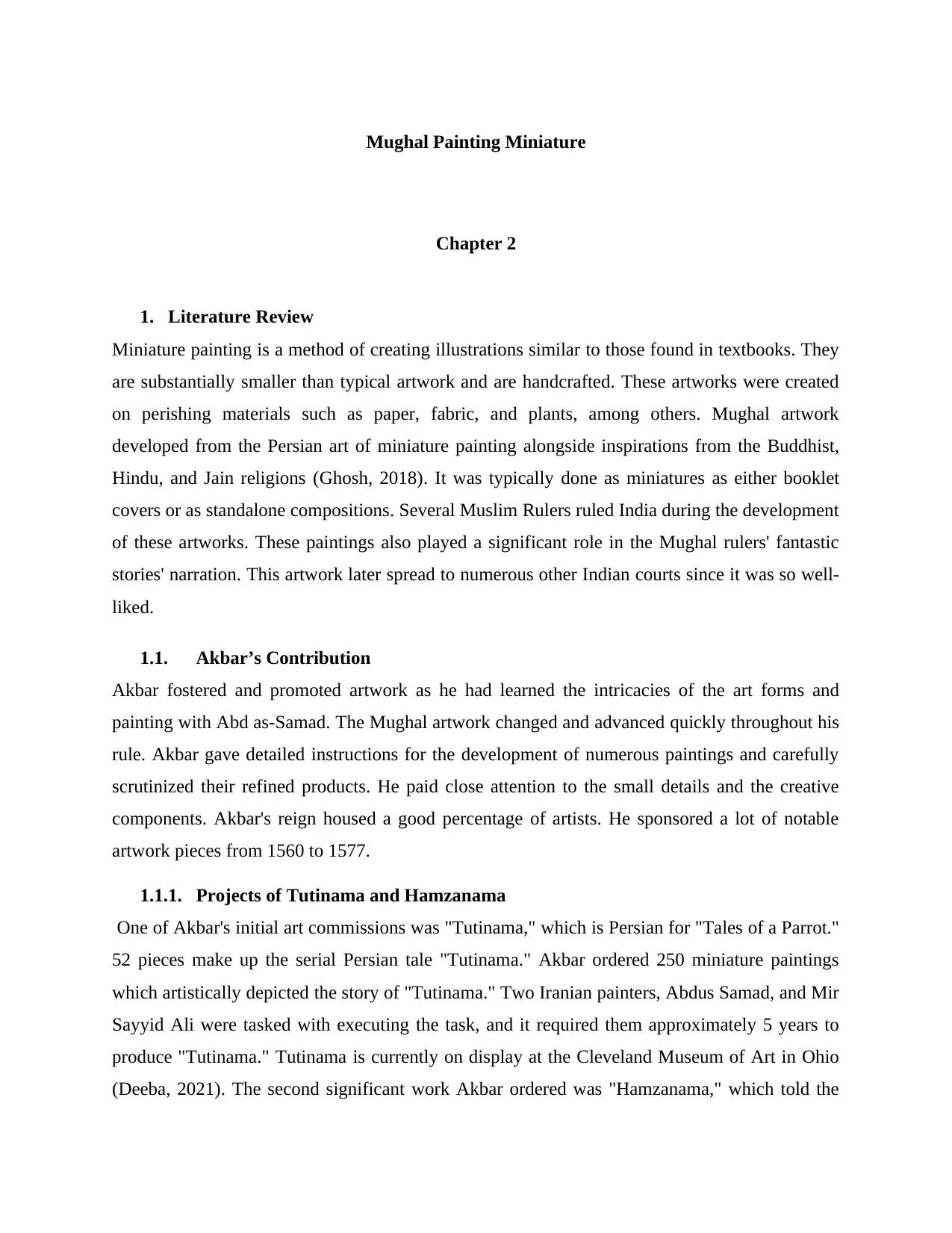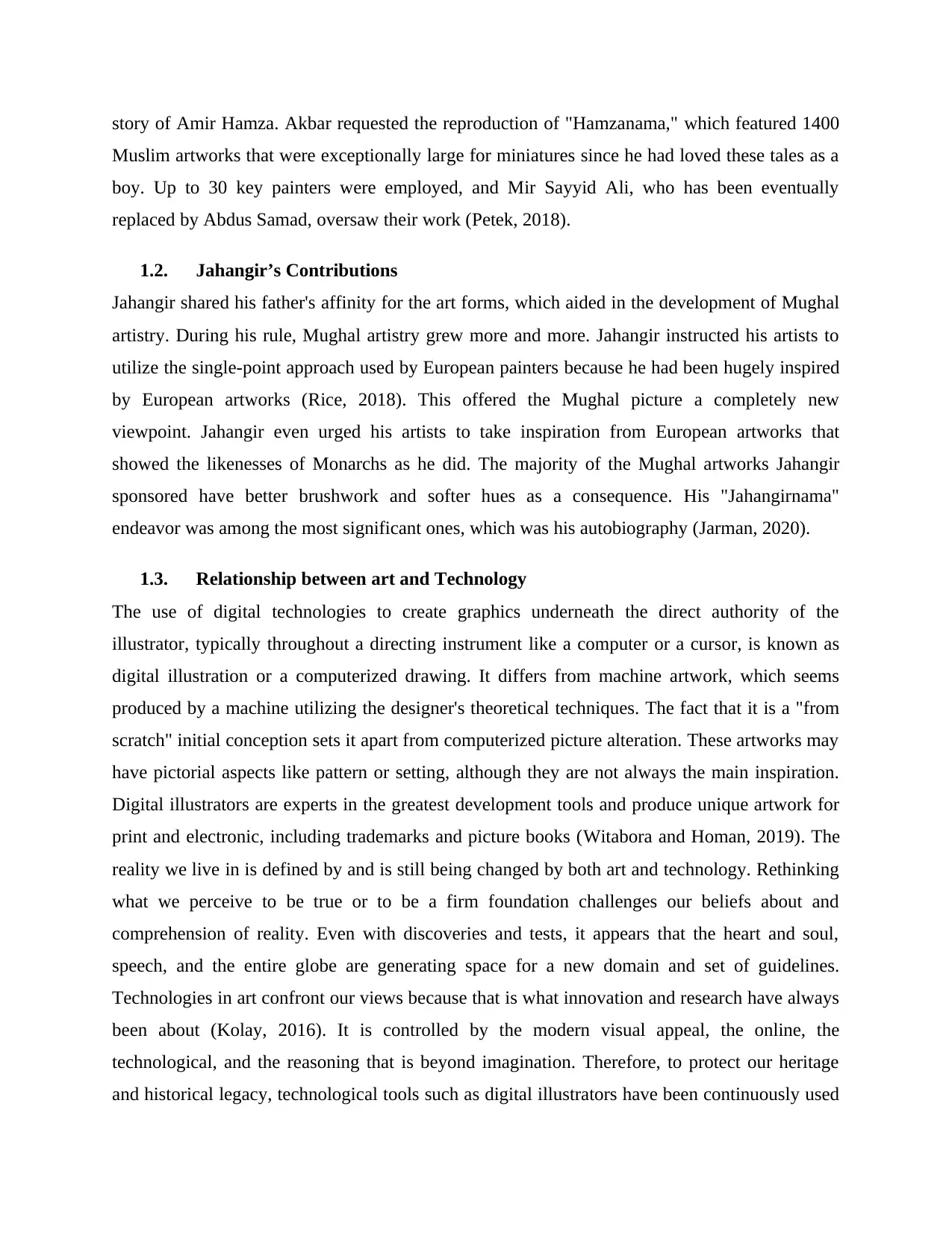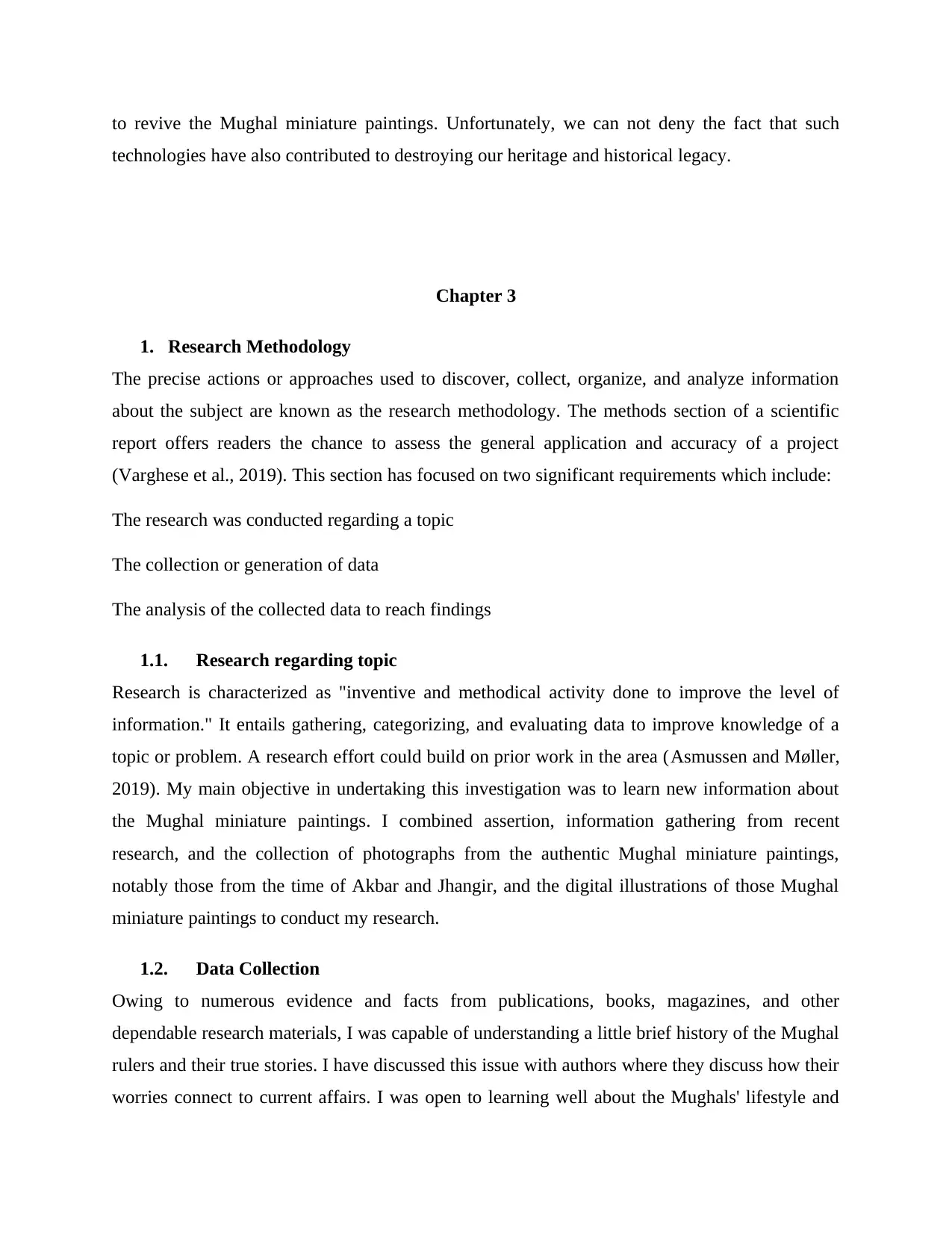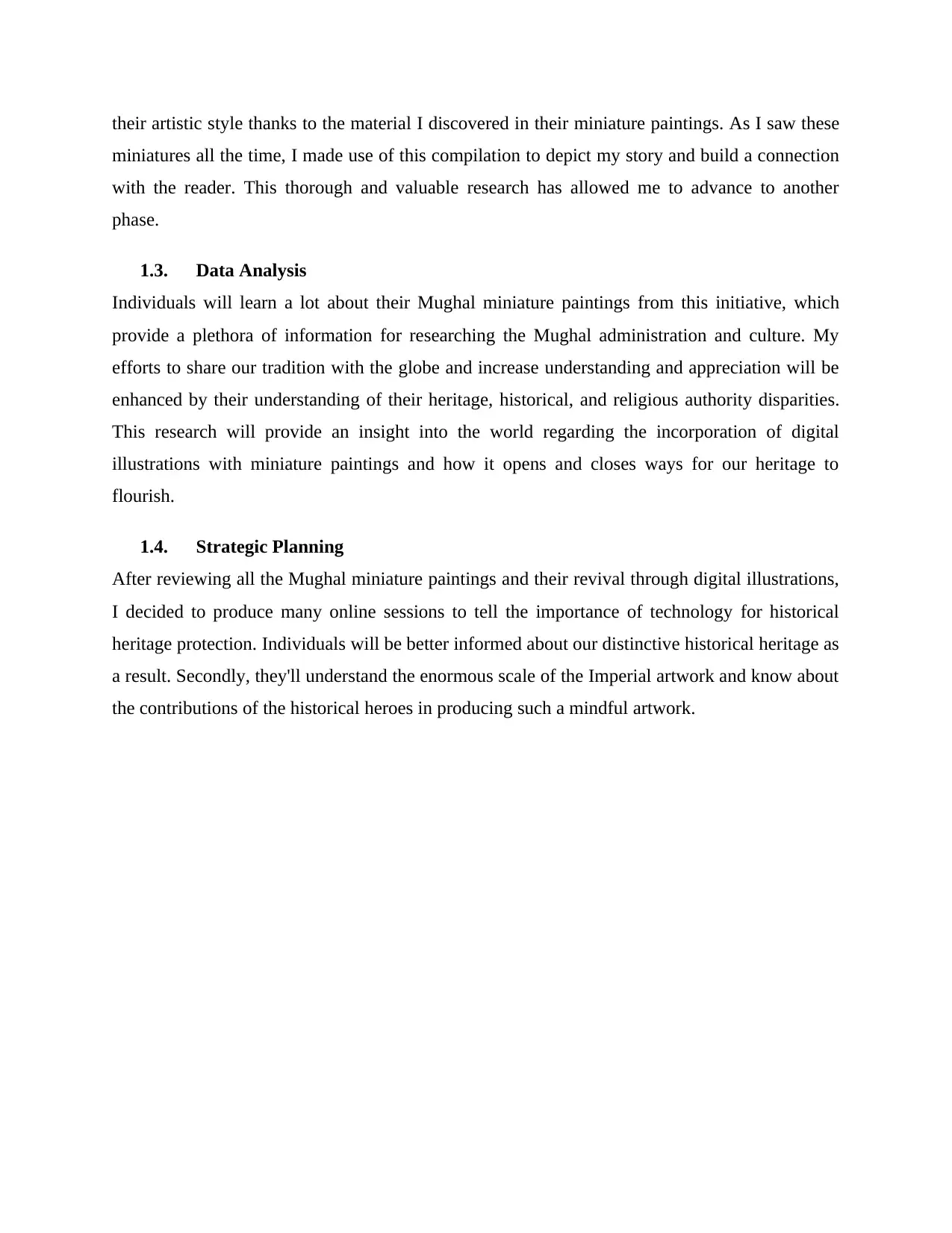Mughal Miniature Painting: Chapter 2 Literature Review Analysis
VerifiedAdded on 2023/02/02
|5
|1353
|45
Literature Review
AI Summary
This literature review delves into the captivating world of Mughal miniature paintings, commencing with an exploration of their origins and development, drawing inspiration from Persian art alongside influences from Buddhist, Hindu, and Jain religions. The review highlights the significant contributions of Mughal rulers, particularly Akbar and Jahangir, who fostered the art form through patronage and meticulous oversight. Akbar's commissions, including the 'Tutinama' and 'Hamzanama,' are discussed, emphasizing their artistic significance and the collaborative efforts of artists. The review also examines Jahangir's influence, his appreciation for European art, and his promotion of refined brushwork and color palettes. Furthermore, the review explores the relationship between art and technology, specifically digital illustration, and its role in both preserving and potentially altering the legacy of Mughal miniature paintings. The research methodology section details the approach taken, including data collection from various sources, analysis of the collected information, and strategic planning for disseminating the findings. The review concludes by emphasizing the importance of understanding Mughal miniature paintings for preserving cultural heritage and fostering appreciation for historical artistry, as well as the need to explore the impact of digital technologies on this art form.
1 out of 5







![[object Object]](/_next/static/media/star-bottom.7253800d.svg)